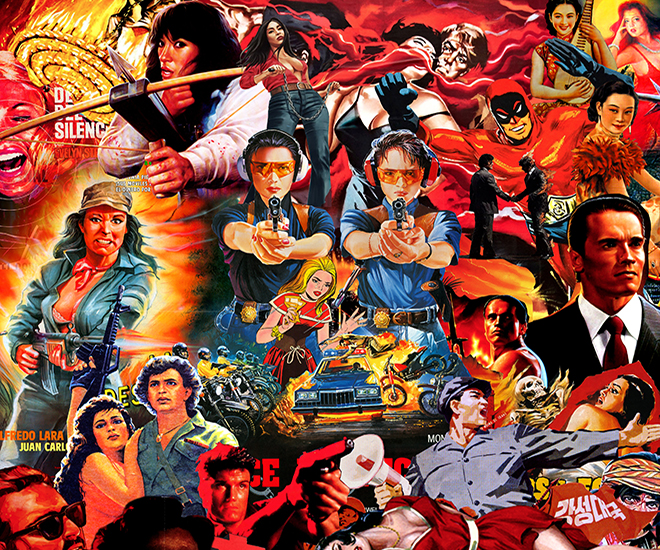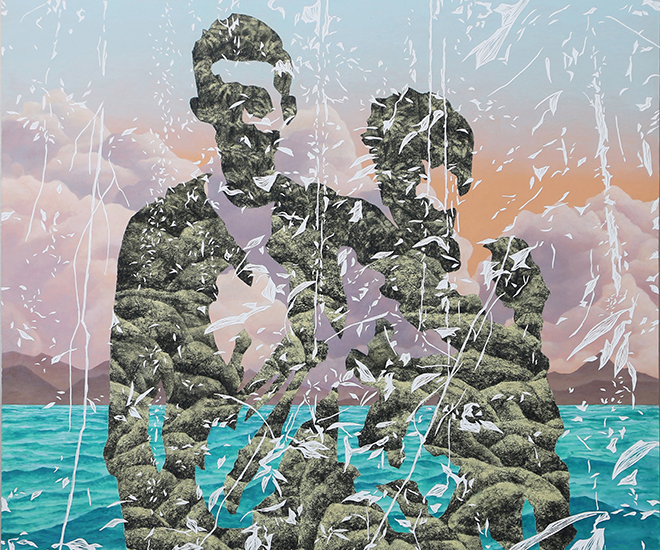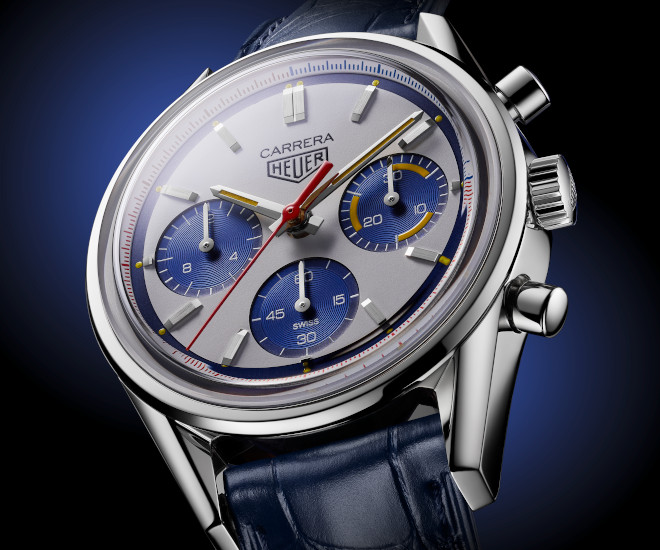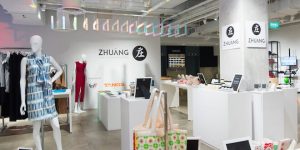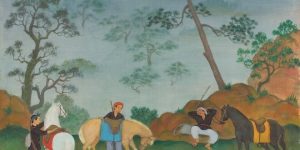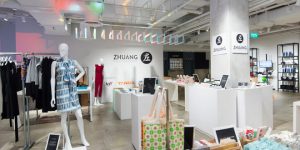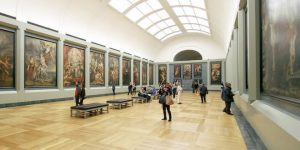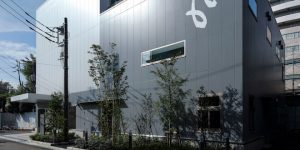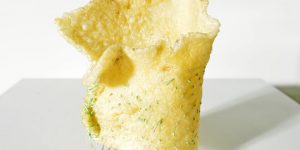Art Spaces in Singapore: Interview with Director Emi Eu on STPI celebrating 15 years and more
Art Republik speaks to print and paper extraordinaire Emi Eu about collaborating with artists and what to expect from the Creative Workshop & Gallery this year

‘All Together. In Your Way. Out of Hands’ (detail), 2016, Carsten Höller, Tobias Rehberger, Anri Sala & Rirkrit Tiravanija, Produced at STPI – Creative Workshop & Gallery, Singapore © The Artists/STPI
An esteemed individual that needs little introduction, Emi Eu has been an invaluable core member of Singapore Tyler Print Institute (STPI) since its humble beginnings. She is on the Selection Committee of Art Basel Hong Kong (ABHK) and a member of the Joint Committee for Art Basel. She is also the programme director of Hermès Singapore’s art space, Aloft; the Vice President of the Art Galleries Association Singapore (AGAS); and adjunct lecturer at Singapore Management University.
In celebration of its 15th anniversary, STPI will be opening their blockbuster exhibition from March 18 to April 22, featuring its first collective collaboration with four luminary international artists: Carsten Höller, Tobias Rehberger, Anri Sala and Rirkrit Tiravanija. Over the past year, the artists jointly produced a body of four new works based on the children’s game ‘Exquisite Corpse’ — a device the Surrealists adopted to engineer free association. STPI is also participating in ABHK 2017 with a group showing of acclaimed artists from across Asia, including Jane Lee, Shinro Ohtake, Do Ho Suh, and Haegue Yang.
Art Republik sits down with Emi to reminisce STPI’s serendipitous uphill climb, and to find out what’s in store for its celebratory 15th year.
STPI turns 15 this year. How was it like when STPI started?
We were on our own since 2002. Back then we had [Ong] Boo Chai, who is now with Helutrans. He was the person keeping everything together while I was busy trying to get programming going. Then later on in 2004, Irene Lee, my predecessor joined us and she put everything in place and gave us the structure in which we were supposed to operate. Irene was extremely helpful in STPI’s transitional period, teaching us how to run a business and more.
What are the biggest chances you have taken since becoming director of STPI in 2009?
I was very involved in just about everything since the beginning. STPI started out with a small team of three people and now we have 12 people in the gallery. When I took over formally as director, our main goal was to participate in Art Basel for the validation. So we were constantly looking to building up our CV, and at the same time really working towards getting the gallery to be much more active. We needed more money as our residency programme. Working with artists from the international circuit whose ways of working were very different demanded a lot more resources. So we spent a lot more time making sure that whatever we do through our residency program was recognised. We did a lot of PR exercises in-house. But I think it was possible because our programming at the time was not as rigorous as now.
Even in 2009?
2009 was not so demanding yet because we were only doing Art HK. And in 2007 and 2008, we participated in SH Contemporary. But you know when we are talking about participating in a fair like Art Basel, the preparation that goes into it is really a lot more. The benchmark is much higher in a sense; it’s a very rigorous process of preparing the proposal. We’d been doing it year after year; we started to apply since 2007 I believe, and we only first participated in Art Basel, Basel, in 2013. It really took us a while before we got accepted.

Emi Eu at a 2016 STPI Fundraiser
So your biggest aim for STPI was to take it international?
I knew that Art Basel was the ultimate place we needed to be in order to get validation. And once we’re there as a gallery that participates in Art Basel, then the collectors, curators and artists will look at us differently. And sure enough, they did.
We participated in Art Basel, Basel, in 2013, but Art HK in the meantime became Art Basel Hong Kong (ABHK). I was then sitting on the selection committee of Art HK while ABHK inherited most of us. It all happened at once and we basically had to make sure we stayed on top of everything and maintained consistency.
That was a huge leap from 2009 to 2012, and 2012 was in fact our 10th year anniversary. After that, everything just scaled up so much because we were participating in three Basel fairs, including Art Basel Miami Beach (ABMB), which we debuted at in 2014 during ABMB’s 10th year anniversary when they formally introduced their Edition sector. So just keeping up with three fairs for a place like us — small team where we do production, maintain, conserve, sell, everything — it’s just a big operation for us.
And just when we were really starting to take off, Rita Targui joined us in 2014. Since then, she has brought gallery activity and programming to another level, which was something I was wanting for the gallery.
When I look back, things were happening at the right time and I just cannot be more thankful. And I have an amazing board. I mean if they didn’t support me, I don’t think I would be able to do a lot of these things. And of course MCCY (Ministry of Culture, Community & Youth, Singapore) has been a lot more engaging; they’ve turned around and given us the support we need.
I’m sure being STPI where you create original works, you must stand out?
Each fair is very different. You know when we went to Basel for the first year, nobody knew who we were. So when you go to a new fair that is not in your home ground, you still have to do a lot of marketing, and the best and most effective way is a personal and physically present approach. So I was just doing a lot of lobbying, a lot of ground work.
That year, I submitted [Ho] Tzu Nyen’s work into the Film sector as well, so it was playing there, and at the same time we had one of his works at our booth, along with a work by Genevieve Chua — she freshly made this really amazing table — and a beautiful flower wall by Heman Chong. So it was all of that and we were very busy just promoting ourselves but we didn’t sell anything.
Oh you didn’t…
Because they didn’t know who we were. Basel is very much a European fair and American collectors come but most of the visitors are from Europe so we had to first build our name. And people had to see us and our consistency. Presentation is also very important. So even though we didn’t sell a thing that first year, it was a marketing chance for us and just the fact that we got in there, we were so elated and kind of just basked in the euphoria. We made it! But it was also only the start.

‘Jitterbugs Tangofly Tagplants’ (detail), 2016, Carsten Höller, Tobias Rehberger, Anri Sala & Rirkrit Tiravanija, Produced at STPI – Creative Workshop & Gallery, Singapore © The Artists/STPI
Over your time at STPI, which artist is your favourite or stand out the most?
It’s always very difficult to answer this and I can’t really choose one artist over another because each experience is different. But if I had to, I think I would name Do Ho Suh because it took me a very long time to convince him to come to STPI. From the time I wanted to work with him, which was 2004/2005, and when he came in which was 2008, it took a very long time so when it happened I felt like I accomplished something.
The same was with Rirkrit Tiravanija. I first met him when Eugene Tan came back to head LASALLE’s The Institute of Contemporary Arts Singapore when it was still at Goodman; I met Rirkrit there and saw his work for the first time and by the time he came in, it was 2012/2013, so that also took a very long time.
So I wouldn’t say my favourite project but the artists that stood out for me are the ones I really needed to persevere to bring them in. And moreover with these artists we had amazing projects that further gave me great satisfaction.
Some of these artists don’t work in print.
Exactly. Actually you know Rirkrit came finally but I remember he was just like: “What am I supposed to do [?] I don’t even make print.” But it’s when he realised he could make something then it became more about the process that he enjoyed very much. In fact, he’s so fluent in the print language now that he could just come in and make something really quickly.
That’s amazing. It’s like you unlock different worlds for them.
Yeah there’s a groove. And I think that’s why artists really don’t mind coming back even though it is a very big commitment on their part, because they really have to work hard and intensely as they have limited time, but they get something back.
How do you choose the artists you work with?
In the beginning, I didn’t have a formula. Through the years, I think mostly I have to first understand and appreciate the practice of an artist: what they do and what is the concept behind their works. And I have to always think about how much of a risk a project will have because because I have a big family at STPI, so I have to make sure whatever we do and the effort that we put in, there has to be a good return, financially as well. I need to see whether they are capable and willing to take on this huge challenge of working with more than 12 people to make artworks that don’t necessarily utilise what they are used to. I mean it’s a very big risk for the artist to come out of the comfort zone of their own studio, to experiment and to put out a show. And a lot of the time artists see our gallery space and they get intimidated thinking about how much work they have to make to fill the space. So it’s not only us taking the risk but them as well.
The whole kind of invitation process — because our program is by invitation only — is to see the capability and calibre of the artist that can actually work with our team and be able to take advantage of every single thing that we can offer. I usually see this in museum shows, solo shows in galleries and new works in art fairs. And of course it would be great if I could also meet them in person to get a better feel and prepare my team on what particularities he or she has. And sometimes, depending on the artist and how much time they have with us, I have hunches about the kind of works they can produce with us so I can suggest how we can add on to their practice. So it’s even better if I can understand the artist on a personal level, but really it’s more important that I get a feel of their practice and understand it, which is why I need to go and visit art a lot.

‘(dreams that money can not buy)’ (detail), 2016, Carsten Höller, Tobias Rehberger, Anri Sala & Rirkrit Tiravanija, Produced at STPI – Creative Workshop & Gallery, Singapore © The Artists/STPI
Do you get art-out?
Yeah sometimes. I think it’s more that I get art-out daily, but then the next day I’m ready for it again.
Could you name three artists whose works you would love to have?
Yes, I would love to have anything by da Vinci, any of the Song dynasty masters’ scrolls, and any of the Renaissance masters’ sculptures, like Donatello – I’ll take anything from him.
What can we expect from STPI in 2017?
2017 is our 15th anniversary. We would like to use the whole year to just celebrate with our usual exhibitions and residencies; not that these are going to be better than the other years, but just the fact that we’ve been around for 15 years, we would like to make more effort in reaching out to Singaporeans, because I think we’re still not well-known in Singapore because we’re still very niche. So we would like to publicise more and maybe if we can give back something, we will do so.
So far, we’ve opened with Amanda Heng as our first exhibition of 2017 in the gallery, as well as participated in Art Stage. Then at the end of January, we had an external show in London, which was a project with Do Ho Suh. Every time he comes back to do something, we’re discovering new ways to make different types of work. So we came up with another type of work and it was part of his first solo show with his London gallery, Victoria Miro. That was also a huge debut for STPI in London, without having to go to Frieze. And we have our upcoming participation at ABHK where we have big plans to showcase, amongst others, Shinro Ohtake who has only been shown in Singapore and Miami Beach; and at the same time in March, our huge four-artist group exhibition opens at the gallery. So it has been an amazing start to 2017 and a lot more to come throughout the year with a strong focus on Singapore.
